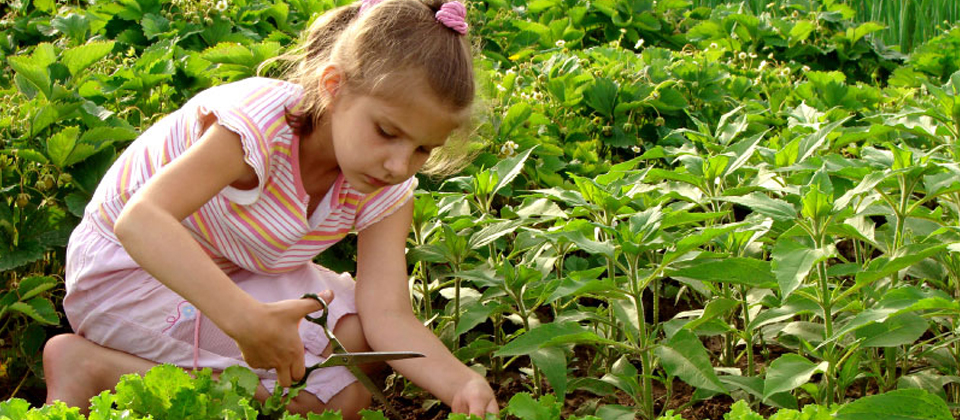Enter the kitchen garden:
A garden is as distinct and individual as your tastes will allow. Whether you like it hot and spicy-with herbs and peppers that sing with flavor-or subtle blends of flavorful veggies and culinary herbs, it is easier than you think to have success in the garden and in the kitchen.
Today’s kitchen gourmet is more likely to trek to the backyard garden than to the local market for fresh rosemary, peppers or cilantro. Where else can you be assured of a variety of fresh produce that is designed around your palette?
There are three elements essential to a successful planting: location, drainage and spacing
Location:
Most vegetable and herb gardens need a minimum of four to six hours of direct sunlight for peak performance. The ideal exposure would be a southwestern or a southern exposure. That would mean the garden would be bathed in sunlight from around 10 am till 3 or 4 in the afternoon.
We suggest using a rectangular shape for your garden bed. By keeping your dimensions to a 4′ x 8′ plot you will insure an easy accessibility to your garden for weeding, watering and harvesting. You might use a flexible garden hose to approximate your final garden. Just as a good carpenter will measure twice in order to cut just once, an experienced gardener will spend a week or so in gauging the available sunlight over the terrain in order to establish the best available location.
Once your location is secured, then it is time to address the issue of drainage. Almost all culinary herbs and vegetables benefit from good drainage. A garden bed is built, as in built up, to insure the best possible conditions. This type of gardening is known as a “raised” garden. Raised beds can be created quickly, often in a single Saturday afternoon.
Use wooded materials such as non-treated pine or cedar, wall-stone or edgers to frame your bed. This should result in an increase of anywhere from 6-8″ from ground zero. Once your materials are obtained and your spot is properly marked (use limestone), turn the existing soil to a depth of six to eight inches. A couple of passes with a borrowed rototiller will do the trick. If you are digging by hand, remove this soil and mix it with compost or manure, peat moss and top soil to create a rich cake-like consistancy. Turn all the materials in a large pile by fork and shovel and fill your now assembled frame. Attempt to mound towards the center. Drainage gaps can be used on the corner and center sections.
Grade your soil smooth of rocks, lumps and debris
Then it is time to lay out your plant material. Pay close attention to the spacing requirements listed on the plant tags. Plant for maturity. Our sample bed of roughly 32 square feet should hold at least 24 plants properly spaced. Depending on your needs, you might start with one or two plants of a variety. This should give you plenty of material for a wide variety of meal possibilities. With proper plant selection, it should be enough produce to spark neighborhood get togethers throughout the summer months. Bon Appetit!
Not enough room? Consider the contained garden:
Whether it is a situation where there is a shortage of a sunny spot or maybe you are simply limited in space. You can still take advantage of the information above. Just adapt it to the container(s) and space
available to you. This is a great way for apartment or condo dwellers to maintain a small culinary garden.
Whisky barrels, terra cotta planters or even window boxes can produce a bounty of herbs, vegetables and flowering material. The key to success remains in light, drainage and spacing. We’d love to introduce you to the many possibilities of container gardening.

